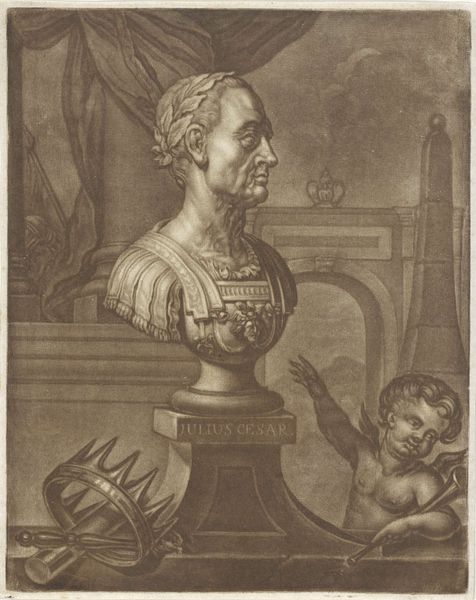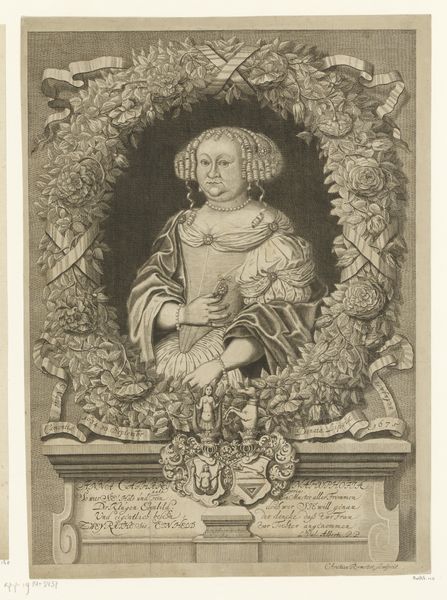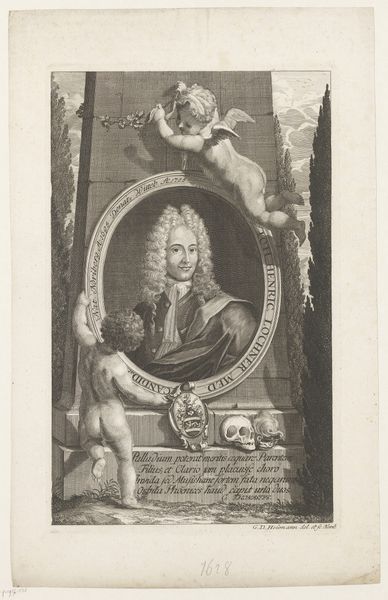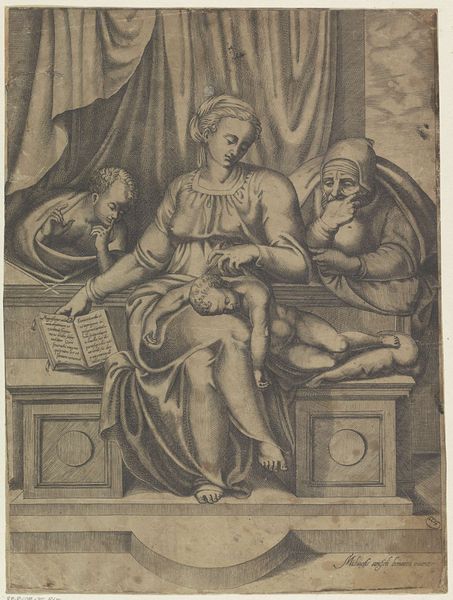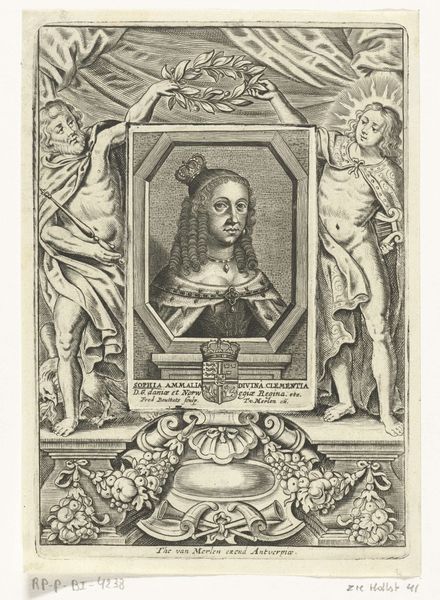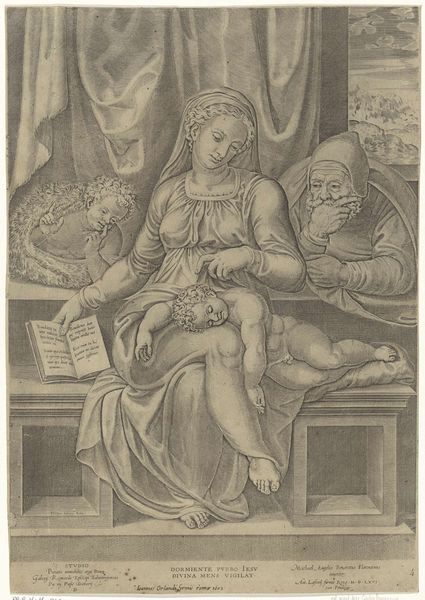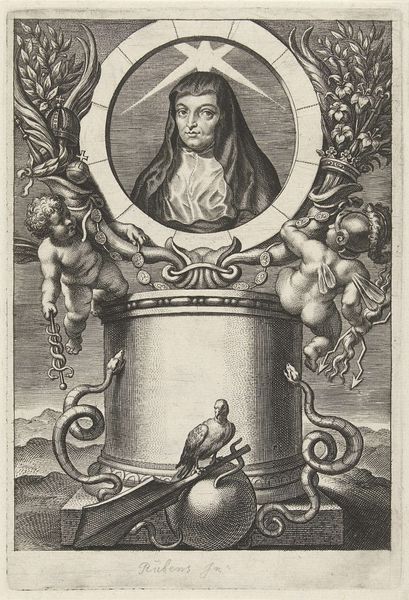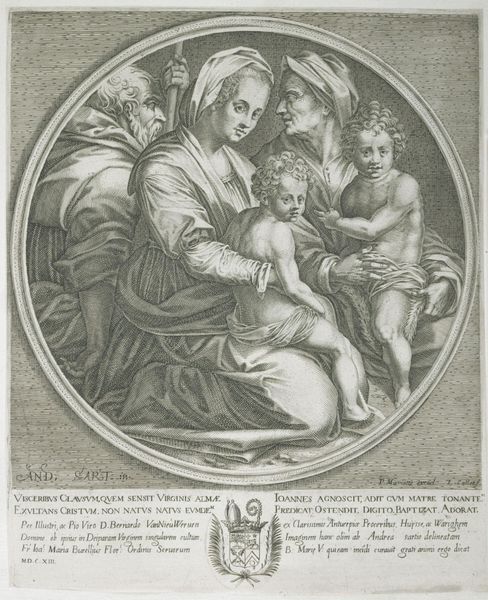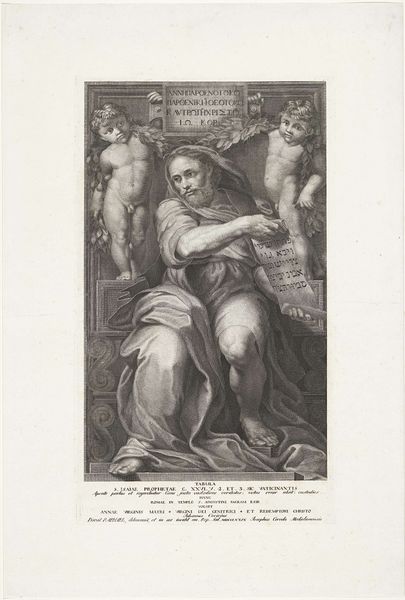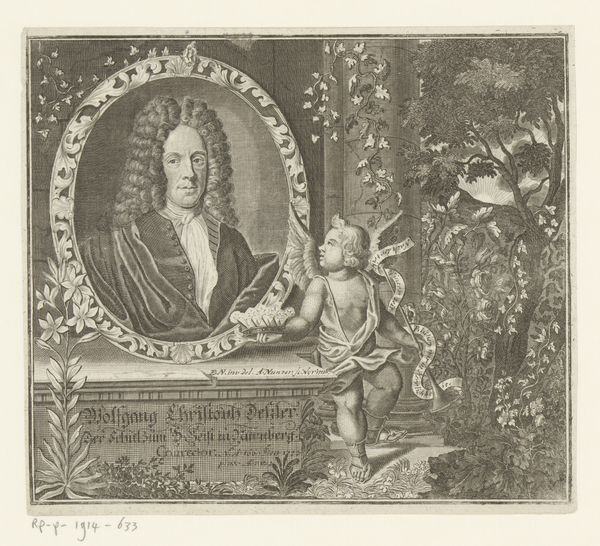
print, engraving
#
portrait
#
baroque
# print
#
figuration
#
line
#
portrait drawing
#
engraving
Dimensions: height 271 mm, width 201 mm
Copyright: Rijks Museum: Open Domain
Editor: Here we have Cornelis Bloemaert’s "Portret van Zuster Columba" from 1655, a print housed in the Rijksmuseum. It feels like a study in contrasts. You’ve got this solemn portrait of Sister Columba, but it's adorned by these rather playful cherubs. What do you make of this piece? Curator: Ah, yes! It's funny how our initial impressions are often the most insightful. To me, it feels like a bridge between worlds – the earthly and the divine. The cherubs, lively and almost mischievous, framing Sister Columba’s image, an embodiment of earthly dedication and perhaps, resignation? The print itself, that meticulous line work, is it perhaps suggesting a path, rigid, etched in time? Do you sense any feeling of release beyond those lines? Editor: That’s interesting! The cherubs seemed a bit out of place, almost like they belonged to a different artwork. The line work also does add a sense of rigidity... Maybe that contrast IS the point. Is there some hidden symbolism at play here? Curator: Well, in Baroque art, we often see that kind of juxtaposition. Think of the era itself – an era of religious fervor meeting scientific revolution. Are those cherubs almost mocking her pious dedication, in their youthful oblivion? Or are they heralds of eternal peace, promising a world beyond our earthly burdens? Look closely; they are, after all, adorned with wreaths of what seems to be the bay laurel; this ancient Greco-Roman symbol represented, fame, victory, and reward. How do we truly measure these things? It makes you wonder what Columba felt and yearned for, don’t you think? Editor: I hadn't even considered that level of symbolism with the laurel wreaths; you've given me a lot to consider, how the personal narrative interacts with societal structures in art. Thanks! Curator: It's the beautiful ambiguity that keeps us coming back for more, wouldn’t you agree? It gives life to a dialogue between us, then and now.
Comments
No comments
Be the first to comment and join the conversation on the ultimate creative platform.
